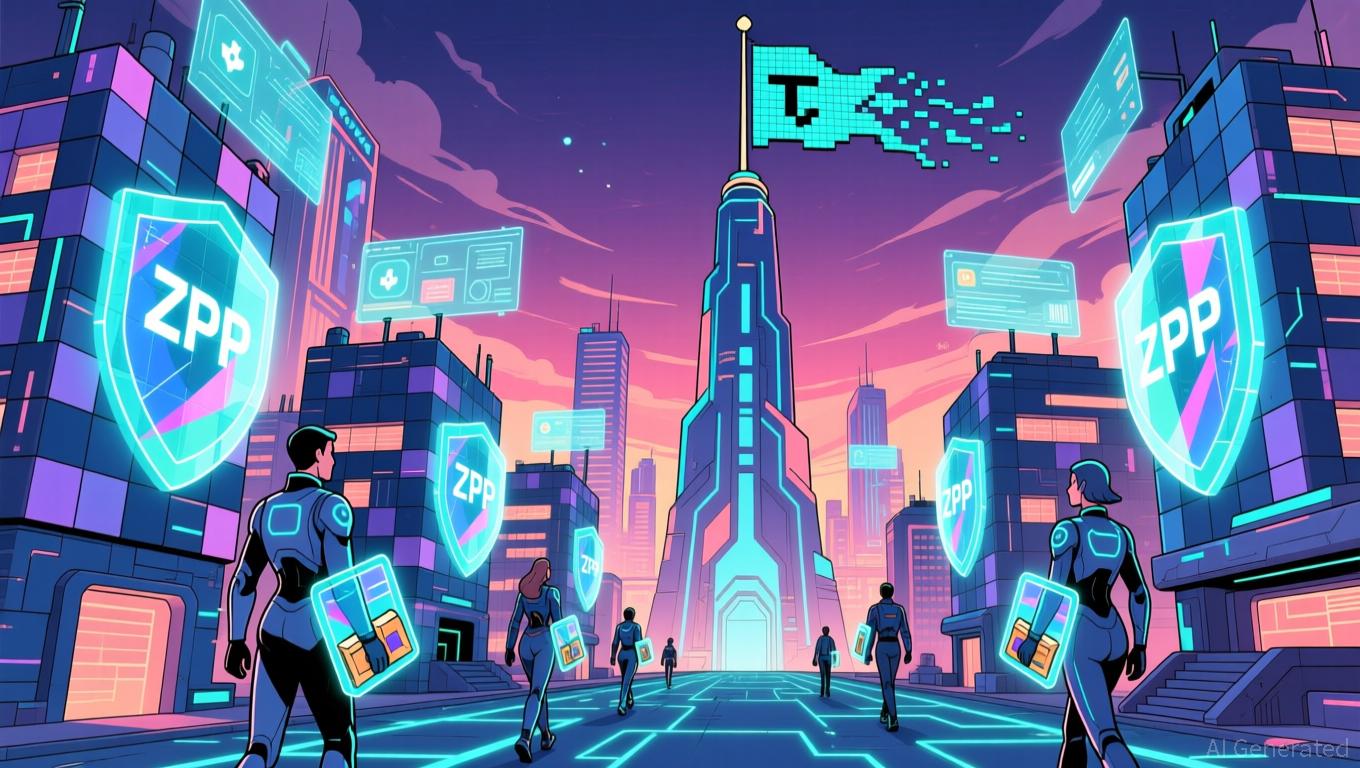Vitalik Buterin Backs ZKsync: Accelerating Ethereum’s Expansion and Advancing Layer 2 Solutions
- Vitalik Buterin endorses ZKsync's Atlas upgrade, highlighting 15,000 TPS, $0.01 fees, and bridging Ethereum's Layer 1/2 liquidity. - ZK Stack innovation reduces capital fragmentation while Airbender prover enables 2-GPU L1 block proofs, advancing Ethereum's scalability. - ZKsync now holds 15% Layer 2 TVL with 50% ZK token surge, but faces 60x performance gaps and competition from Arbitrum/Optimism. - Upcoming Fusaka upgrade targets 30,000 TPS by December 2025, while Kohaku privacy framework addresses ado
ZKsync’s Innovations and Ethereum’s Scaling Aspirations
The Atlas upgrade debuts the ZK Stack, a toolkit that allows assets to move effortlessly between Ethereum’s Layer 1 and Layer 2. By removing the need for isolated liquidity pools, this advancement lessens capital inefficiency and transaction expenses, making Ethereum’s ecosystem more approachable for both individual and institutional participants
The Ethereum Foundation has also affirmed ZKsync’s advancements, especially its Airbender prover, which
Institutional Uptake and Market Trends
ZKsync’s progress has caught the attention of the wider DeFi sector. Top analysts observe that the platform now commands 15% of the Layer 2 total value locked (TVL),
Buterin’s renewed emphasis on privacy also aligns with Ethereum’s broader objectives. The Kohaku framework,
Challenges and Prospects
Despite its strengths, ZKsync must overcome several hurdles. The Ethereum Foundation has warned that complex operations—such as RSA verification—continue to be expensive for zero-knowledge provers,
Nevertheless, the synergy of Buterin’s endorsement, Ethereum Foundation backing, and ZKsync’s ambitious development plan presents a strong case for investors. The platform’s delivery of shared liquidity, extremely low fees, and privacy-centric features positions it as a crucial driver of Ethereum’s vision for a scalable, secure, and user-friendly blockchain.
Summary
Vitalik Buterin’s support for ZKsync goes beyond mere symbolism—it signals a strategic convergence between Ethereum’s scaling objectives and ZKsync’s technical progress. With the Atlas and Fusaka upgrades, ZKsync is tackling Ethereum’s scalability challenges while reshaping the economics of Layer 2 adoption. For investors, the intersection of institutional interest, Ethereum Foundation approval, and a clear trajectory toward 30,000 TPS offers a compelling opportunity in the rapidly evolving blockchain sector.
Disclaimer: The content of this article solely reflects the author's opinion and does not represent the platform in any capacity. This article is not intended to serve as a reference for making investment decisions.
You may also like
Crypto ATM Operator Eyes $100M Sale Amid Founder’s Money Laundering Case
Why is Crypto Up Today? Here's What you didn't Notice...
Ethereum News Today: Ethereum's Recent Overselling: Is a Recovery Imminent or Will the Decline Continue?
- Ethereum faces mounting bearish pressure amid crypto market selloff, with technical indicators and extreme fear metrics signaling a stretched downtrend. - Market capitalization dropped 8% in 24 hours, Bitcoin dominance rose to 56%, while ETH trades below key EMAs with an oversold RSI of 27. - Binance confirms "Strong Sell" signals for ETH/USD, with 12 bearish moving averages and a 14-day RSI of 30.48 reinforcing the negative bias. - DeFi liquidity crisis ($12B idle assets) and a Fear & Greed Index at 14

Blockchain’s Evolving Foundations: Institutional Embrace Fueled by Governance and Privacy
- Tezos (XTZ) shows steady recovery via governance-driven upgrades, regaining $0.60 support amid growing institutional altcoin interest. - Zero Knowledge Proof (ZKP) gains traction with privacy-focused tech, $100M engineering investment, and transparent ICA token distribution. - Both projects highlight blockchain 3.0 priorities: Tezos emphasizes forkless governance adaptability, ZKP advances verifiable privacy infrastructure. - Analysts project XTZ reaching $1.20 by 2026 through RWA partnerships, while ZKP
